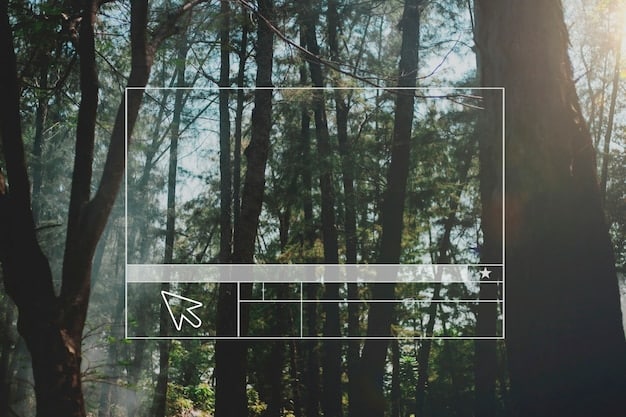Reduce Streaming Data Usage: Tips for Limited Internet Plans

To minimize streaming service data usage on limited internet plans, adjust video quality settings, download content for offline viewing, monitor data consumption, and utilize Wi-Fi networks whenever possible.
Running out of data while streaming your favorite shows? You’re not alone. With the rise of streaming services, many users on limited internet plans are struggling to manage their streaming service data usage effectively. But don’t worry, you can learn how to watch more and spend less with our tips.
Understanding Streaming Service Data Usage
Streaming services have revolutionized how we consume entertainment, offering vast libraries of content at our fingertips. However, this convenience comes with a cost: data consumption. Understanding how much data different streaming activities use is the first step in managing your bandwidth.
Factors Affecting Data Usage
Several factors influence the amount of data a streaming service uses. These include video quality, resolution, and the streaming platform itself. For example, higher video quality settings will consume significantly more data than lower settings. Similarly, streaming in 4K resolution uses more data than streaming in standard definition (SD).
Typical Data Usage Rates
Here’s a general overview of data usage rates for different video qualities:
- SD (Standard Definition): Approximately 0.7 GB per hour
- HD (High Definition): Approximately 3 GB per hour
- 4K (Ultra High Definition): Approximately 7 GB per hour
Understanding these rates can help you estimate how much data you’ll use during a streaming session and adjust your settings accordingly.
In conclusion, being aware of the factors that impact data usage and understanding typical data rates are essential for managing your streaming on a limited internet plan. By making informed decisions about video quality and resolution, you can enjoy your favorite content without exceeding your data limits.

Adjusting Video Quality Settings
One of the most effective ways to reduce **streaming service data usage** is by adjusting the video quality settings within your streaming apps. This simple adjustment can make a significant difference in your overall data consumption, allowing you to watch more content without overage charges.
How to Change Video Quality
Most streaming services, such as Netflix, Hulu, and Amazon Prime Video, allow you to adjust video quality settings directly within their apps or through your account settings online. Typically, you can choose between options like “Auto,” “Low,” “Medium,” and “High.” Selecting a lower setting reduces the resolution and, consequently, the data usage.
Impact on Data Consumption
Lowering your video quality from HD to SD can drastically reduce data consumption. For example, streaming in SD uses approximately 0.7 GB per hour, whereas streaming in HD can use up to 3 GB per hour. This means you could watch nearly four times as much content in SD compared to HD within the same data allowance.
Finding the Right Balance
While reducing video quality saves data, it’s essential to find a balance that provides an acceptable viewing experience. Experiment with different settings to see which one offers the best compromise between visual quality and data usage. You might find that medium quality is sufficient for watching on smaller screens like smartphones or tablets, while reserving higher quality for larger TVs.
In summary, adjusting video quality settings is a practical and easy way to minimize data usage while streaming. By understanding the impact of different quality settings, you can tailor your streaming experience to fit your data limits without sacrificing too much in terms of visual quality.
Downloading Content for Offline Viewing
Another strategy for minimizing **streaming service data usage** is to download content for offline viewing. Many streaming platforms allow you to download movies and TV shows directly to your device, enabling you to watch them without using any data at all.
Benefits of Downloading
Downloading content offers several benefits beyond just saving data. It allows you to watch your favorite shows while traveling, during commutes, or in areas with poor internet connectivity. It also ensures uninterrupted viewing, as you won’t have to worry about buffering or video quality fluctuations.
How to Download Content
Downloading content is usually straightforward. Within the streaming app, look for a download icon or button next to the movie or TV show you want to watch. The app will typically allow you to select the video quality of the download, with higher quality downloads consuming more storage space on your device.
Platforms Offering Downloads
Popular streaming services that offer download options include:
- Netflix
- Amazon Prime Video
- Hulu (with certain plans)
- Disney+
Take advantage of these features to enjoy your favorite content on the go without impacting your data allowance.
In conclusion, downloading content for offline viewing is a smart way to reduce your **streaming service data usage**, especially if you have a limited internet plan or frequently find yourself in situations where internet access is unreliable. By planning ahead and downloading your favorite shows, you can enjoy seamless entertainment without worrying about data consumption.
Monitoring Your Data Consumption
Keeping track of your data usage is essential for staying within your internet plan limits. Most devices and streaming services offer tools and features that allow you to monitor your data consumption in real-time, providing valuable insights into how much data you’re using.
Using Device Settings
Smartphones, tablets, and computers typically have built-in settings that allow you to monitor network usage. On smartphones, you can find data usage information in the settings menu, often under “Network & Internet” or “Data Usage.” These settings provide a breakdown of data usage by app, allowing you to identify which streaming services are consuming the most data.
Streaming Service Tools
Many streaming services also offer their own data monitoring tools. For example, Netflix allows you to view your account’s data usage history and adjust playback settings to control data consumption. Check the settings within your streaming apps to see if they offer similar features.
Third-Party Apps
In addition to built-in settings and streaming service tools, several third-party apps can help you monitor data usage. These apps often provide more detailed analytics and customizable alerts, allowing you to track your data consumption more precisely.
Setting Data Alerts
To avoid exceeding your data limits, consider setting up data alerts on your device or through your internet service provider. These alerts will notify you when you’re approaching your data cap, giving you time to adjust your streaming habits and avoid overage charges.
In summary, monitoring your data consumption involves utilizing a combination of device settings, streaming service tools, and third-party apps to track your data usage. By actively monitoring your data, you can identify data-hungry apps, adjust your streaming habits, and avoid exceeding your internet plan limits.

Utilizing Wi-Fi Networks
One of the simplest and most effective ways to reduce **streaming service data usage** is to utilize Wi-Fi networks whenever possible. By connecting to Wi-Fi, you can stream as much as you want without using any of your cellular data allowance.
Finding Wi-Fi Hotspots
Wi-Fi hotspots are available in many public places, such as coffee shops, libraries, and airports. Take advantage of these free Wi-Fi networks to stream your favorite content when you’re away from home. However, be mindful of security risks when using public Wi-Fi, as these networks are often less secure than private networks.
Securing Your Home Wi-Fi
To ensure the security of your home Wi-Fi network, use a strong password and enable encryption. This will prevent unauthorized users from accessing your network and consuming your bandwidth. Additionally, consider using a guest Wi-Fi network for visitors, which isolates their devices from your primary network.
Optimizing Wi-Fi Performance
To optimize Wi-Fi performance for streaming, ensure that your router is properly configured and positioned. Keep your router up-to-date with the latest firmware and place it in a central location to provide the best coverage. Avoid placing your router near walls or metal objects, as these can interfere with the signal.
- Use a strong password: Protect your Wi-Fi with a complex password.
- Enable encryption: Use WPA3 or WPA2 for secure connections.
- Update router firmware: Keep your router updated to improve performance.
By optimizing your Wi-Fi setup, you can enjoy a seamless streaming experience without worrying about data limits.
In conclusion, utilizing Wi-Fi networks is a straightforward way to significantly reduce your **streaming service data usage**. By taking advantage of both public and private Wi-Fi networks, you can stream as much as you want without impacting your cellular data allowance. Prioritizing Wi-Fi connections for streaming activities is a key strategy for managing your bandwidth effectively.
Choosing Data-Efficient Streaming Services
Some streaming services are more data-efficient than others, meaning they use less data to deliver the same video quality. Choosing data-efficient services can help you stretch your data allowance further and enjoy more content without exceeding your limits.
Comparing Data Usage
Before subscribing to a streaming service, research its data usage rates and compare them to other services. Look for services that offer lower data usage options or automatically adjust video quality based on your internet connection speed.
Services with Data-Saving Features
Some streaming services offer specific data-saving features. For example, YouTube allows you to manually set the video quality to a lower resolution, reducing data consumption. Similarly, some services offer compressed video formats that use less data without sacrificing too much visual quality.
Bundling and Promotions
Consider bundling your streaming services with your internet or mobile plan. Many providers offer promotions that include free or discounted streaming subscriptions, which can save you money and provide access to more content.
In summary, choosing data-efficient streaming services is another effective way to minimize your overall data usage. By researching data usage rates, looking for data-saving features, and considering bundling options, you can enjoy a wide range of content without breaking the bank or exceeding your data limits.
| Key Point | Brief Description |
|---|---|
| 📉 Adjust Video Quality | Lower video quality to reduce data usage while streaming. |
| 📲 Download for Offline | Download content to watch without using any data. |
| 📊 Monitor Data Usage | Track data usage on devices and streaming services. |
| 🌐 Use Wi-Fi | Connect to Wi-Fi to avoid using cellular data. |
FAQ
▼
Streaming in HD typically uses about 3 GB of data per hour, making it a significant consumer of bandwidth for those on limited internet plans.
▼
Yes, Netflix allows you to download many of its movies and TV shows for offline viewing. This feature is available on the Netflix app.
▼
On an iPhone, go to Settings > Cellular > Cellular Data Usage to see a breakdown of data usage by app.
▼
Yes, streaming over Wi-Fi is generally better because it doesn’t use your cellular data allowance, which helps you avoid overage charges.
▼
Most major streaming services offer data-saving settings, allowing you to reduce video quality and data consumption. Check the settings in your app.
Conclusion
Managing your **streaming service data usage** on limited internet plans doesn’t have to be a struggle. By understanding data consumption rates, adjusting video quality settings, downloading content for offline viewing, monitoring data usage, utilizing Wi-Fi networks, and choosing data-efficient streaming services, you can enjoy your favorite content without exceeding your data limits and incurring extra fees.





